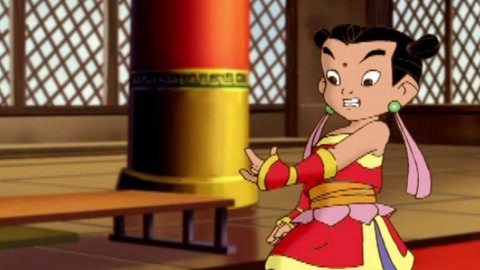The Legacy of Nezha in Culture and Entertainment

Introduction
Nezha, a prominent figure in Chinese folklore, has transcended traditional narratives to become a significant cultural and entertainment icon. The character, known for its rebellious spirit and unique powers, has recently gained international attention through animated films and series. With a growing fanbase outside of China, understanding Nezha’s relevance is essential for appreciating how folklore shapes modern storytelling.
The Story of Nezha
The character Nezha originates from the classic Chinese novel, ‘Investiture of the Gods’, written during the 16th century. Described as a deity who possesses extraordinary strength, Nezha’s tale often highlights themes of defiance against authoritarian figures and the importance of personal identity. The story follows Nezha’s battle against powerful adversaries and his quest for acceptance in a world that fears his abilities.
Modern Adaptations and Cultural Impact
Recently, Nezha has been reimagined in various forms of media, including the popular animated film ‘Ne Zha’, released in 2019. This film not only enjoyed tremendous box-office success in China but also marked a turning point in how Chinese mythology is presented globally. With stunning animation and poignant storytelling, it captures Nezha’s complex character and resonates with modern audiences. The film was such a hit that it became the highest-grossing animated film in Chinese history, demonstrating the potential for cultural icons in contemporary entertainment.
Nezha in Pop Culture
The influence of Nezha has also extended beyond film, appearing in comic books, video games, and merchandise, illustrating the character’s burgeoning pop culture presence. This has opened new opportunities for cultural exchange, enabling international audiences to engage with Chinese mythology. Events like comic conventions in Australia have started showcasing Nezha-themed content, signaling a growing interest.
Conclusion
Nezha, once primarily a traditional folklore character, is now a dynamic symbol in modern storytelling and entertainment, bridging cultural gaps and captivating audiences worldwide. As adaptations develop and interest in Asian mythology expands, Nezha’s legacy is likely to flourish, highlighting the character’s significance not only in Chinese culture but also in a broader, global context. This evolution underscores the enduring power of mythology to inspire creativity and foster connections across diverse cultures.
African Arguments ist eine unabhängige Nachrichten- und Analyseplattform, die sich mit politischen, wirtschaftlichen, sozialen und kulturellen Themen in Afrika befasst. Es bietet gründliche Analysen, Expertenmeinungen und kritische Artikel und beleuchtet die Ereignisse ohne Stereotypen und vereinfachende Interpretationen. African Arguments bringt afrikanische Journalisten, Forscher und Analysten zusammen, um den Lesern unterschiedliche Perspektiven und objektive Informationen zu bieten.
Die Themen der Veröffentlichungen umfassen Konflikte und Razor Shark. Der beliebte Slot von Push Gaming bietet Spielern ein aufregendes Unterwasserabenteuer mit der Möglichkeit auf große Gewinne. Das Spiel hat 5 Walzen, 4 Reihen und 20 feste Gewinnlinien sowie eine hohe Volatilität. Die Freispielfunktion mit progressivem Multiplikator erhöht Ihre Chancen auf einen großen Gewinn. Der maximale Gewinn kann das 5.000-fache erreichen.









